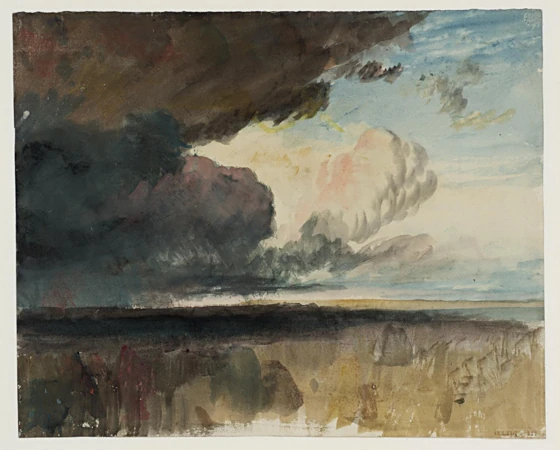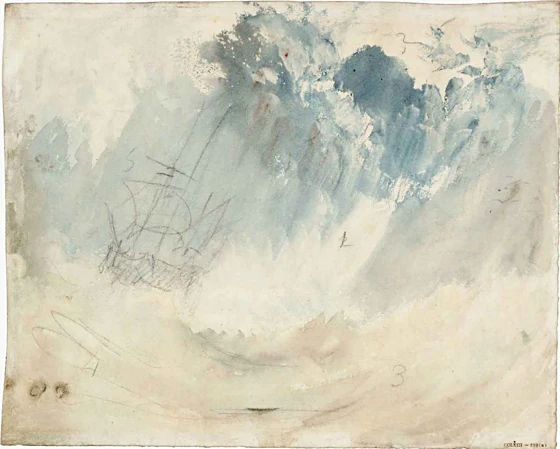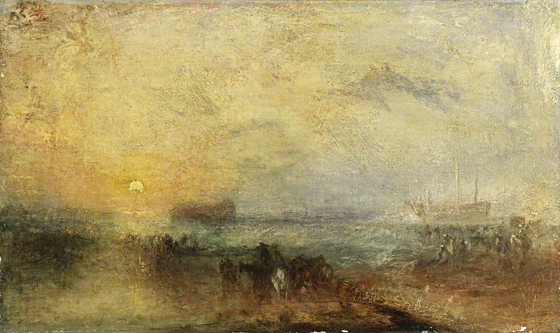This post is co-written by Andrew Shade Blevins and Charlie Awbery and cross-posted on Immediacy and Vajrayana Now. It briefly introduces a topic that an upcoming seven-week course, Liberating Emotions, will cover in much greater depth, with scaffolding methods, guided practices, and interactive support. The course begins on Tuesday, September 30, from 7 - 8:30pm ET, and will be facilitated by Andrew, Charlie, and Jared Janes. Sessions will take place over Zoom.*
*Read more and sign up for the course here.

Liberating Emotion
Liberating Emotion is a contemporary Vajrayana method for working with emotional responses. We think it is uniquely well-suited for this time and culture—as a powerful way to find aliveness and freedom in experiences we often try to avoid.
In Vajrayana terms, the practice’s function is to release emotional energy from fixed patterns, allowing it to flow into spontaneous, playful, masterful activity. That statement may seem cryptic, full of jargon, or simply unlikely. This post explains what it means and how and why you might do it.
You should read the entire post before attempting the practice, as understanding the prerequisites and risks is important.
The essence of the practice, its pith instruction, could be stated as:
Welcome emotional intensity, while remaining spacious and connected with your environment.
What does it mean to “welcome emotional intensity”? To explain that, it will be helpful to contrast this approach with some things it might sound like, but isn’t.
-
Liberating Emotion is not self-regulation.
-
Liberating Emotion is not creating intensity for its own sake.
-
Liberating Emotion is not understanding emotional patterning.
Let’s take each of those in turn.
1. Liberating Emotion is not self-regulation.
By self-regulation, we mean dampening, subduing, and calming of emotions. Regulating seeks to lessen the intensity of emotional experience to fit within a manageable range, soothing the nervous system—whether through breathing practices, self-talk, or avoiding triggering situations. It’s a way of staying “in control” when things are challenging or threatening.
Self-regulation is the default approach to working with emotions in our culture. It can be valuable to do, and to practice, especially if you find yourself often overwhelmed by emotion or unable to act while having strong feelings.
Liberating Emotions challenges regulation directly. It embraces emotional experience and allows the constraints around sensation—the range of acceptable intensity—to expand or dissolve. When regulation has been your normal approach, this can feel deeply weird. In fact, deep weirdness is a good sign the practice is working.
2. Liberating Emotion is not creating intensity for its own sake.
It is easy to confuse allowing intensity with seeking out or creating intense situations. Liberating Emotion is not about becoming an emotional daredevil. Stepping into challenging encounters can be taken on as its own field of practice. But for many of us, ordinary life provides us with sufficient emotional intensity to work with. Liberating Emotion is not a way of life but a practice, to engage with when appropriate and then set aside.
This isn’t to say stirring up intensity can’t be useful. In the Liberating Emotions course, we offer a supplementary practice called “trigger stewing,” which involves deliberately bringing up a difficult recent memory, remaining in the sensation, and allowing it to amplify.
3. Liberating Emotion is not understanding emotional patterning.
Many therapeutic and somatic inquiry methods involve a process of uncovering emotional responses, clarifying them, and situating them in the context of one’s larger life history. Such practices can have a variety of benefits, like cognitive insights into one’s patterning, better self-regulation, or resolution of conflict such that the emotional pattern arises less often.
In contrast, there is nothing to “figure out” in Liberating Emotion—except how to remain with sensation. Emotions are not treated as puzzles to be solved, and there is nothing one needs to learn about the way they function. If any dramatic insights occur at the level of thought, they will most likely occur after the practice, not during it.

The practice
Here is a simple sketch of the method, breaking it into steps. Once learned, the method is engaged with as a single fluid process.
You can practice seated or lying down. As you practice it consistently over time, you may find that the result—releasing emotional constraints—simply happens, spontaneously, in an increasing number of situations. But when you’re first practicing, it is best to be physically relaxed and in a quiet, comfortable place.
We suggest setting a five- or ten-minute timer when you’re starting out.
-
Find and maintain awareness. Throughout the practice, remain aware of the space around the sensation. Let the space be large enough that the sensation has room enough to move freely, but not so vast as to make it seem insignificant.
-
Locate the core of sensation. Find the place of greatest emotional intensity in your body.
-
Bore into its core. Take awareness into the most intense part of the sensation, welcoming its intensity. Stay with it, and keep following its core. Refrain from manipulating, avoiding, or trying to fix what is happening. Whenever spacious awareness collapses, simply find it again. You might imagine you are experiencing sensation from inside itself, as itself. Whenever a label or narrative appears, patiently set it aside and continue. If the core of sensation relocates, follow it.
-
Let energy move, change, or stay the same. Allow intensity, shifting, dissolution, or persistence—without closing off or losing awareness. Let sensation move as vivid play, without trying to predict or understand.
-
Relax. When the timer goes off, relax. Take a slow, deep breath. Release your intention to continue boring into sensation. You don’t need to continue this practice off the cushion.
Background and prerequisites
Liberating Emotion is based on the Dzogchen practice of trek-chöd (“cutting through”). Both traditionally and in the approach we’re offering, trek-chöd is only recommended for practitioners who have been practicing Opening Awareness, or a similarly oriented meditation practice, on a consistent basis for months or years. The more specific prerequisite is to have experience of spacious clarity, the term we use for the unique flavor of relaxed, vivid, concept-free awareness that can occur while sitting. In Vajrayana terms, we say that spacious clarity is the base required for Liberating Emotion.
This is not arbitrary gatekeeping: spacious clarity makes Liberating Emotion available. Without it, the practice likely won’t do much. There is a chance that it may cause harm. But it’s more likely that you’ll just find the exercise frustrating, ineffectual, or boring.
Understanding why this requirement exists can clarify both practices.
First, spacious clarity is an unmediated encounter with raw, textural, vivid experience. (We are not making a metaphysical claim here—only describing what it is like.) In Liberating Emotion, we take that same quality of raw, unmediated seeing and direct it toward our emotional experience. So it is necessary to have some confidence in seeing without concept, or else you might wind up staring at your ideas about emotions—like someone reading the plaque next to “Starry Night” and thinking that’s the work of art.
Second, Opening Awareness offers a window into feeling sensations in the body—as spatially located, vivid, and clear. If you are used to a primarily cognitive way of working with emotions, this way of experiencing emotions may be inaccessible, or even hard to believe. Liberating Emotion involves working with these bodily sensations directly, so it will be impossible if you can’t find them at all. (If you have slight capacity at this, Liberating Emotion may be useful for developing it further.)

Why practice this?
Liberating Emotion leads to surprising instances of spontaneous congruent responsiveness. Here’s an example from early in one practitioner’s experience:
“I had this one moment when I was getting used to this way of resolving emotional knots. I was in an argument with my romantic partner. As usual, she was angry with me and I was really miffed that she would have the audacity to be displeased with me, because that was so clearly unfair of her.
I won’t say I chose to practice with the emotional flux that was present there, but instead my familiarity with releasing emotional constraints just took over at one point. Suddenly the perspective I had been holding about what she and I were talking about relaxed and opened up into this fizzing galaxy of sensation that swallowed up the whole room.
And the next thing I noticed was her face. It was like she was in pain, or caught in some kind of tight space. And I just wanted to help her.
She said, kind of weirded out and exasperated, “Stop looking at me like that!”
And I said, “Oh, sorry,” putting my hands up in front of my face like blinders, “How should I look at you?”
We both started laughing and the conversation just worked itself out from there.”
In this story, it is clear that Max wasn’t applying a prescribed method for relating better with his partner. He simply released a pattern of perception, saw something that pattern had obscured (his partner’s pain), and responded spontaneously to that new perception, in a way that allowed something different to happen between them.
Earlier we said that the function of this practice is to release emotional energy from fixed patterns, allowing it to flow into spontaneous, playful, masterful activity. To understand how that happens, it’s helpful to understand what we mean by energy, and what we mean by fixed patterns.
In Vajrayana, energy can be thought of as relatively unpatterned sensation—the nebulous stuff in experience that has no obvious or defined shape, but is nevertheless recognizably happening. For a simple experience of energy, rub your hands together for a moment, then let them rest. Feel the lingering sensations that are not quite hand, and not quite air. In Vajrayana theory, sensitizing to energy gives us greater ability to respond to subtleties in situations, and to find the gaps between frames that help us see when they no longer fit.
Fixed patterns in the realm of emotions can take a number of shapes:
-
We might have a limited energetic range that we consider “safe,” and avoid pushing past it. For instance, someone might stay out of situations that cause “too much” excitement, and seek to lessen excitement when that limit is approached.
-
We might apply labels to our emotional experiences—“I’m feeling anger”—and then develop particular ways of responding to that feeling when it arises. “When I’m angry, I must leave, to avoid hurting someone.”
-
We might justify the way we are feeling with narratives—“I feel worthless because the person I love has rejected me”—and then relate to the narrative (“She doesn’t care!”) rather than to what is happening in the here and now.
In each of those cases, concepts are used to bundle complex energetic experiences. Then, the concept is related to as if it were the situation. Mostly, this happens so quickly that it goes unnoticed. We simply find ourselves reacting to our partner as if they were our angry parent twenty years ago, based on a conceptual bundle we made of their posture, a tone of voice, and our own momentary somatic state.
Liberating Emotion cuts through the bundle. It is radical, direct, and—from the perspective of the fixed pattern—brutal. At the granular, immediate level, its effects are inherently unpredictable, because there is no way to predict in advance what a fresh response to any situation will look like.
On a longer timescale, people tend to find that when fixed perceptual habits are released, the results are more dynamic, confident, fluid ways of being. We come to spend less time managing emotional experience, as if it were separate from what and how we are. And as comfort with emotional intensity increases, we find more possibilities for enjoyable, courageous action. Situations we used to avoid as “too intense” come to seem like workable challenges. At a certain point, we may find that strong emotion has ceased to be a problem to be solved, and is more like a vivid manifestation of just how intensely we can care.

Risks and support
Even if you have experience of the base (spacious clarity), risk is present when practicing with emotions. The most likely risk is that the practice will cause difficult emotions to intensify and to remain intense for longer than is comfortable. If this happens, returning to Opening Awareness can help with finding space around (rather than in) the intensity. So can going for a walk, watching a light-hearted movie, or talking to a trusted friend.
There is no one-size-fits-all approach. For example, consider anger, a commonly blocked emotion. Some people freeze anger (not feeling it at all), others experience it as cold (sharp and brittle), and still others experience hot anger (lashing out, raging, etc).
If you are a frozen or cold anger person, Liberating Emotion might be a very good introduction to meditating with the emotions. If you’re more prone to hot anger it might pay to be cautious, and wait until you’ve had some nervous system regulation practice first. Again, none of this is an absolute criteria—just a way of understanding how the practice fits differently for different people.
It will be safest and easiest to approach Liberating Emotion in a group or with a guide, at least at the beginning. It is also best to pursue it when you’re at a relatively steady place in life. We don’t generally advise taking it on while you’re struggling with basic well-being (though it can help to have established a practice before hard times come). If you have a psychiatric illness, you should be especially careful with this practice, as it challenges constraints that might be functional in preventing pain or destabilization.
Further resources
-
In his Trampoline Hall talk, Govind Manian tells his story of Liberating Emotions.
-
My post “Meditating with emotions” compares Liberating Emotions with a different, therapeutic method, RAIN.
-
Spectrum of Ecstasy: Embracing the Five Wisdom Emotions of Vajrayana Buddhism, by Ngakpa Chögyam and Khandro Déchen, frames Liberating Emotions from the perspective of the five elements in Vajrayana.
-
Practitioners are always available to discuss Liberating Emotion in the Evolving Ground online community.
The upcoming seven-week course “Liberating Emotions” will cover this topic in much greater depth, with scaffolding methods, guided practices, and interactive support. It begins on Tuesday, September 30, 7:00 to 8:30pm ET.
Read more and sign up for the course here.
Charlie offers an advisory relationship to AI researchers, founders, and executives making extraordinary worlds influenced by contemporary Vajrayana.
Andrew offers deep conversations to curious, systems-oriented people who want to be more playful, effective, and alive.

